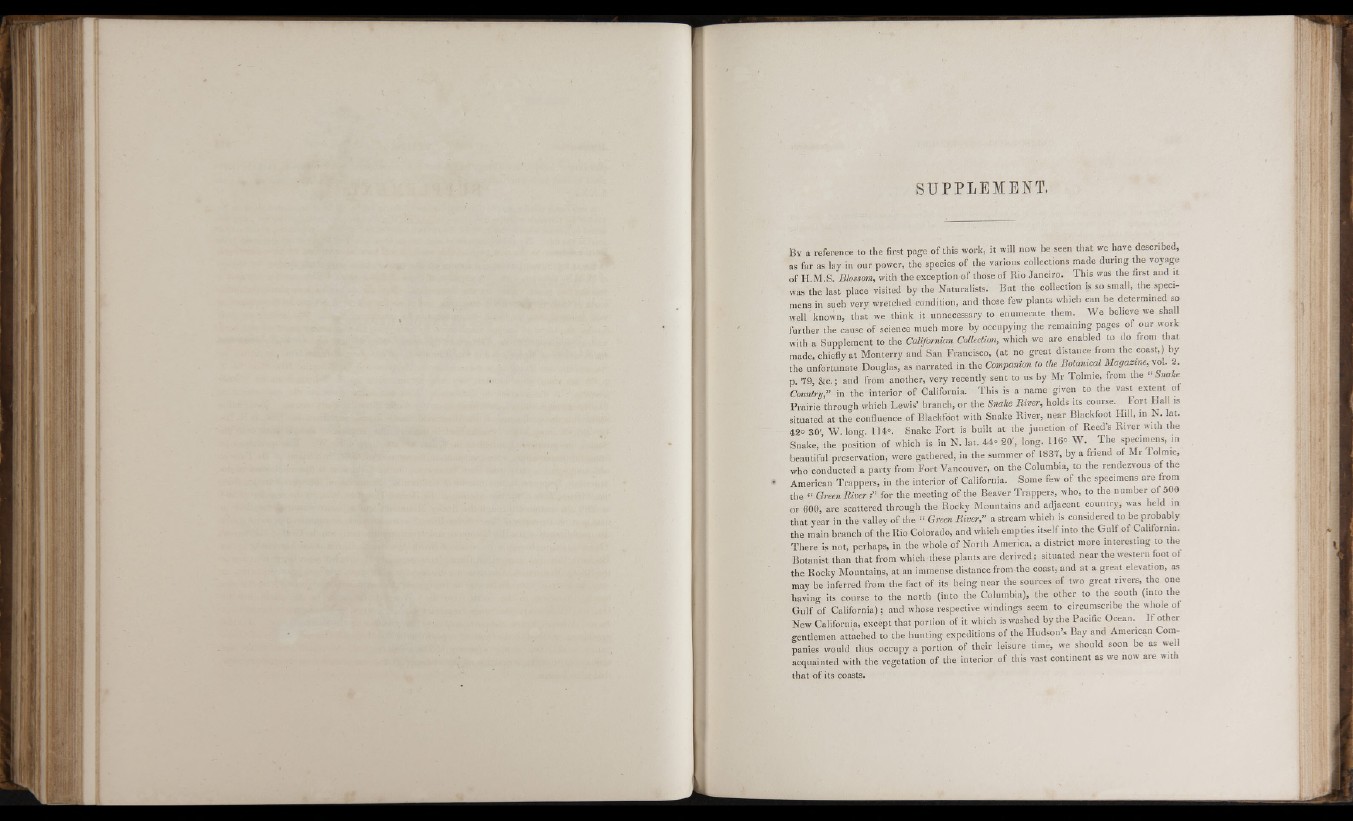
{■I
S U P P L E M E N T .
By a refei ence to the first page o f this work, it wiii now be seen th at we iiave described,
as far as lay in o ur power, the speeies o f the various collections made d u rin g the voyage
o f H.M .S . Bbssom, with the exception o f those of Kio Jan eiro . T in s was the first and it
was the last place visited by the Naturalists. B u t the collection is so small, the specimens
ill such very wretclied condition, and those few plants wliicli can be determined so
well known, th a t we think it unnecessary to enumerate lliem. W e believe we shall
fartlie r the cause o f science much more by occupying the remaining pages o f our work
with a Supplement to the Californian Collection, which we are enabled to do from th at
made, chiefly at Mo n terry and San Francisco, (a t no g rea t distance from the coast, by
the u nfortunate Douglas, as n a rra ted in the Companion to the Botanical Magazirie,yo\. 2.
p 79, &c.; and from an o th er, very recently sent to us by Mr Tolmie, from the Snake
Couninj," in the in te rio r o f California. T h is is a name given to tlie vast ex ten t ol
P ra irie through which Lewis’ branch, or the Snake Biver, holds its course. F o r t Hall is
situated a t the confluence o f Blackfoot with Snake River, near Blackfoot Hill, in N. lat.
42° 30' W . lono-. 114°. Snake F o rt is b u ilt a t tbe ju n ctio n o f Reed’s River wiih tbe
Snake, the position o f which is in N. lat. 44« 20', long. 116« W . T h e specimens, m
beautiful preservation, were gathered, in the summer o f 1837, by a friend of M r Tolmie,
who conducted a p a rty from F o rt Vancouver, on the Columbia, to the rendezvous o f the
American T rap p ers , in the in terio r o f California. Some few o f the specimens a re from
tlie “ Green B iver f ’ for the meeting o f the Beaver T rap p ers , who, to the number o f 509
or 600, are scattered through tlie Rocky Mountains and adjacent country, was lield m
th at year in the valley o f the “ Green Biver,” a stream which is considered to be probably
the main branch of the Rio Colorado, and which empties itself into die G u lf o f California.
T h e re is not, perliaps, in the whole o f North America, a d istrict more in teresting to tlie
Botanist tlian th a t from vvhicli these plants are deriv ed ; situated n e a r the western foot ol
the Kocky Mountains, at an immense distance from the coast, aud a t a g re a t elevation, as
may be inferred from the fact o f its being near the sources o f two great rivers, the one
having its course to the n o rth (into the Columbia), the o th er to the south (into the
G u lf I f California); a n d w h o s e respective windings seem lo circumscribe the whole ol
New California, except th at portion of it whicli is waslied by ti.e Pacific Ocean. I f o ther
gentlemen attached to the h u nting expeditions o f the Hudson’s Bay and American Comp
anies would thus occupy a p ortion of their leisure time, we should soon be as we I
acquainted with the vegetation o f the interior o f this vast continent as we now a re with
ib a t o f its coasts.